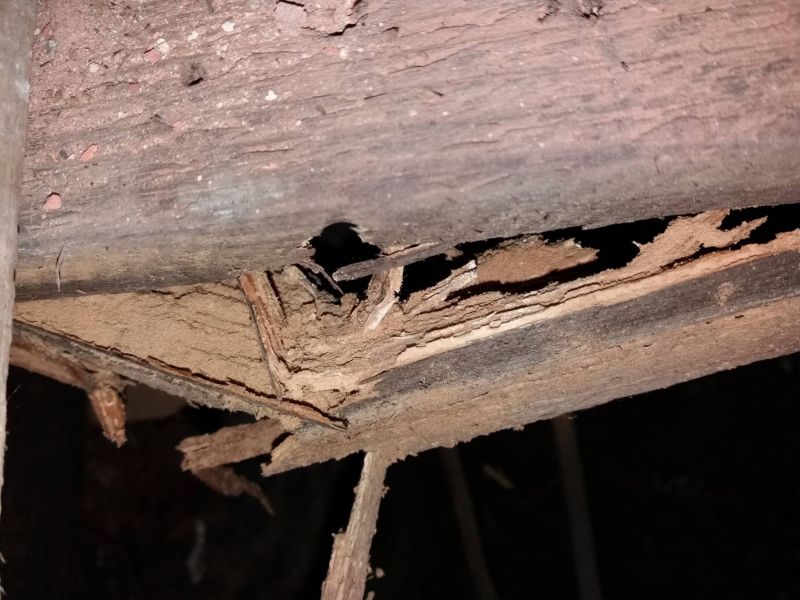
Woodworm is the wood-eating larvae of any of many species of beetle. Signs of woodworm are usually holes in the wood (around 1mmto 1.5mm in diameter), with live infestations showing powder around the holes. The grubs feed on the wooden item causing both structural and cosmetic damage, before pupating and hatching as beetles which then breed, lay eggs, and start the whole process again. As the beetles evolved consuming dead wood in various forest habitats, most grubs, if not all, typically require that the wooden item contain a higher moisture content than is normally found in wooden items in a typical home.
A building with a woodworm problem in the structure or furniture probably/possibly also has a problem with excess damp. The issue could be lack of ventilation in a roof space, cellar or other enclosed space within an otherwise dry building.
The image below shows a general over view of the Common Furniture beetle (CFB or woodworm beetle), wood boring insect, although there are similarities between species.

Timber type, humidity, temperature and moisture content all have to be taken in to account when surveying and specifying treatment
Beetle types:
CFB, Common Furniture beetle Anobium Punctatum
- Attacks sap wood of soft wood and European hard wood
- Widely spread in dead parts of trees and hedges
- Old plywood’s – used blood/ casein glue
- Damp conditions
- Responsible for 80% of wood boring damage
- Life cycle 2-3years
- Fly out season June July
- 2-3mm exit holes
- Pellet shaped frass
- Treatment depending on timber and MWE%
House Longhorn Beetle, Hylotrupes Bajulus
- Found in the south east (Surry/ London)
- Attacks sap wood of soft wood
- Most common in timber less than 70 years old
- Fly out July – October
- Lay 40-50 Eggs
- 6-10 mm oval exit holes
Death watch Beetle, Xestobium Rufovillosum
- Attacks decaying hard woods, oak, pollarded willow
- Attacks sapwood and heart wood of hard woods
- Infest infected oak, and previously infected oak
- Exit season March – June
- Life cycle up to 10 years
- Frass is disc shaped
- Treatment difficult
Wood boring weevil, Pentarthrum Huttoni
- Attacks decaying soft and hard woods
- Timbers in damp conditions
- Poor ventilation eg basements, sub floors and back of skirting
- Adult and larvae attack wood
- Infestation secondary to infection
- 1mm ragged exit hole
- Chemical treatment not normally required if rapid drying can be achieved
- Likely misidentified with CFB
Lyctus Powderpost Beetle, Lyctus Brunneeus
- Likely misidentified with CFB
- Attacks sap wood of tropical and European hard wood oak/ Elm
- Found in block work flooring and floor boards
- 1-2 mm exit hole


